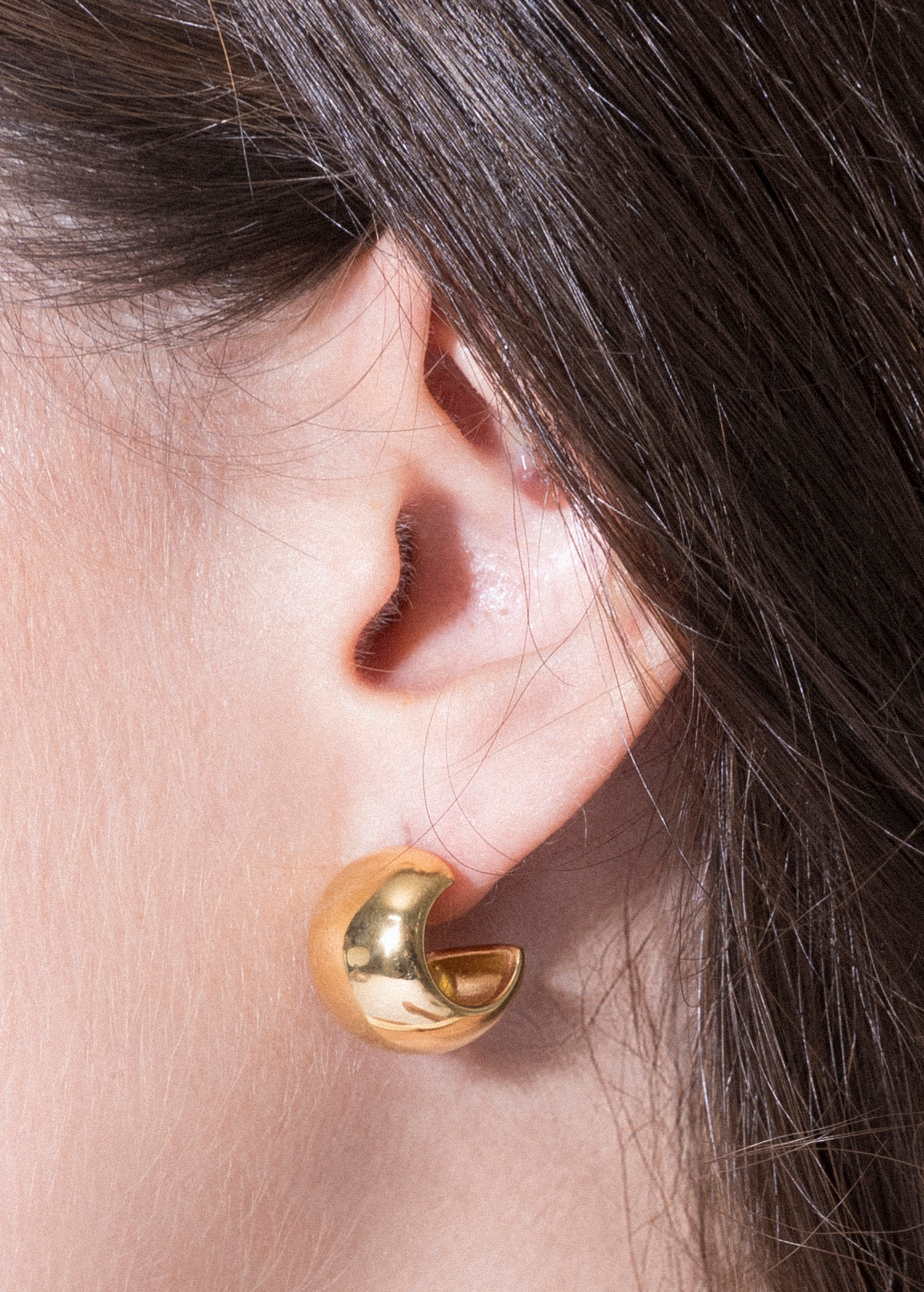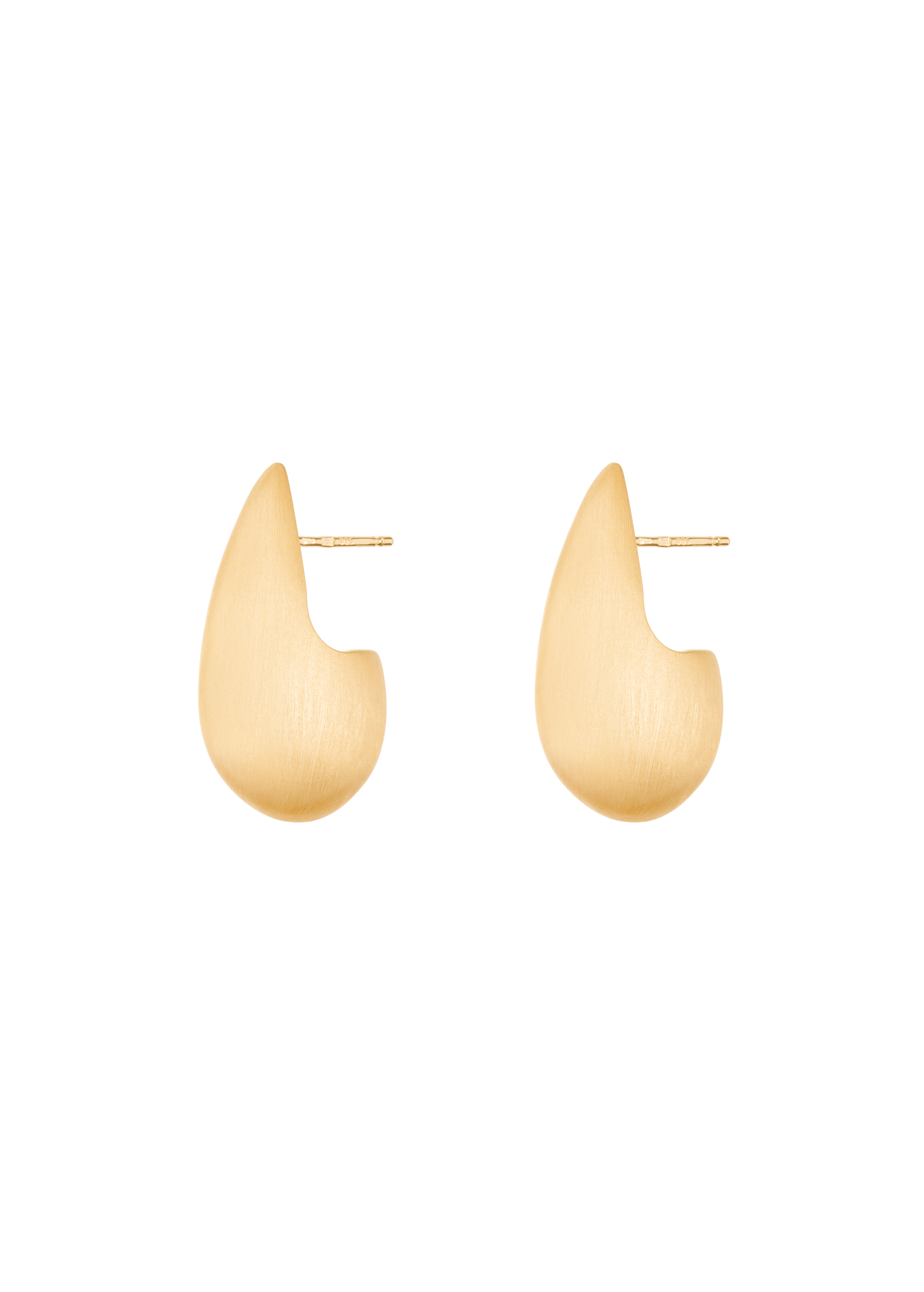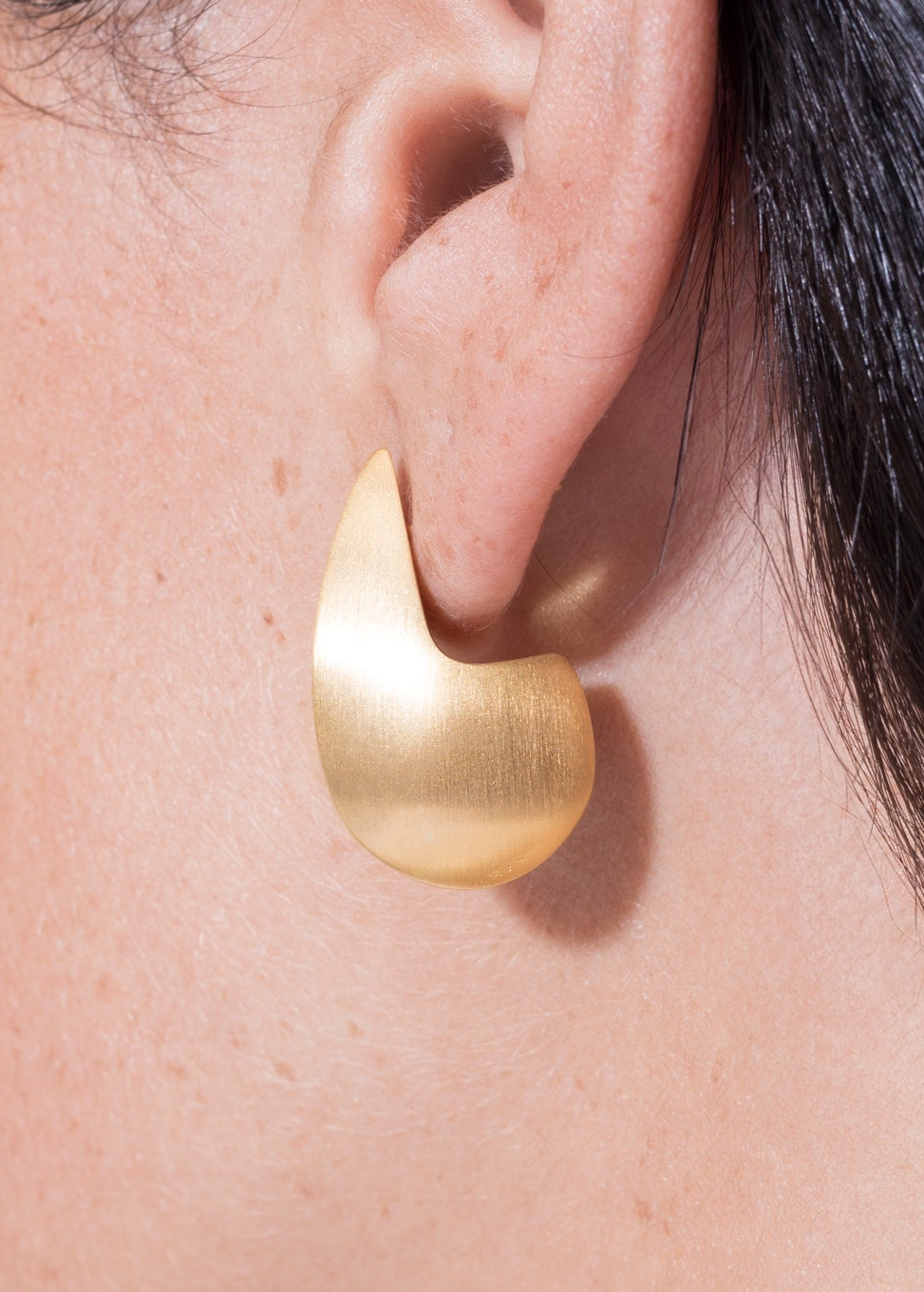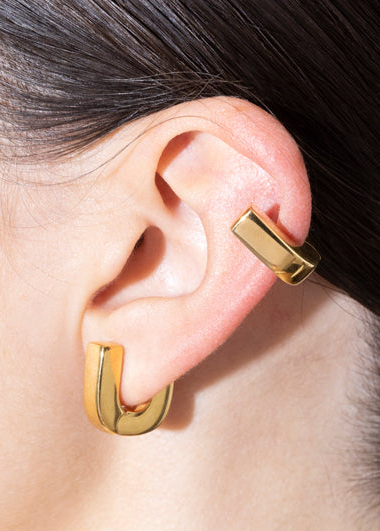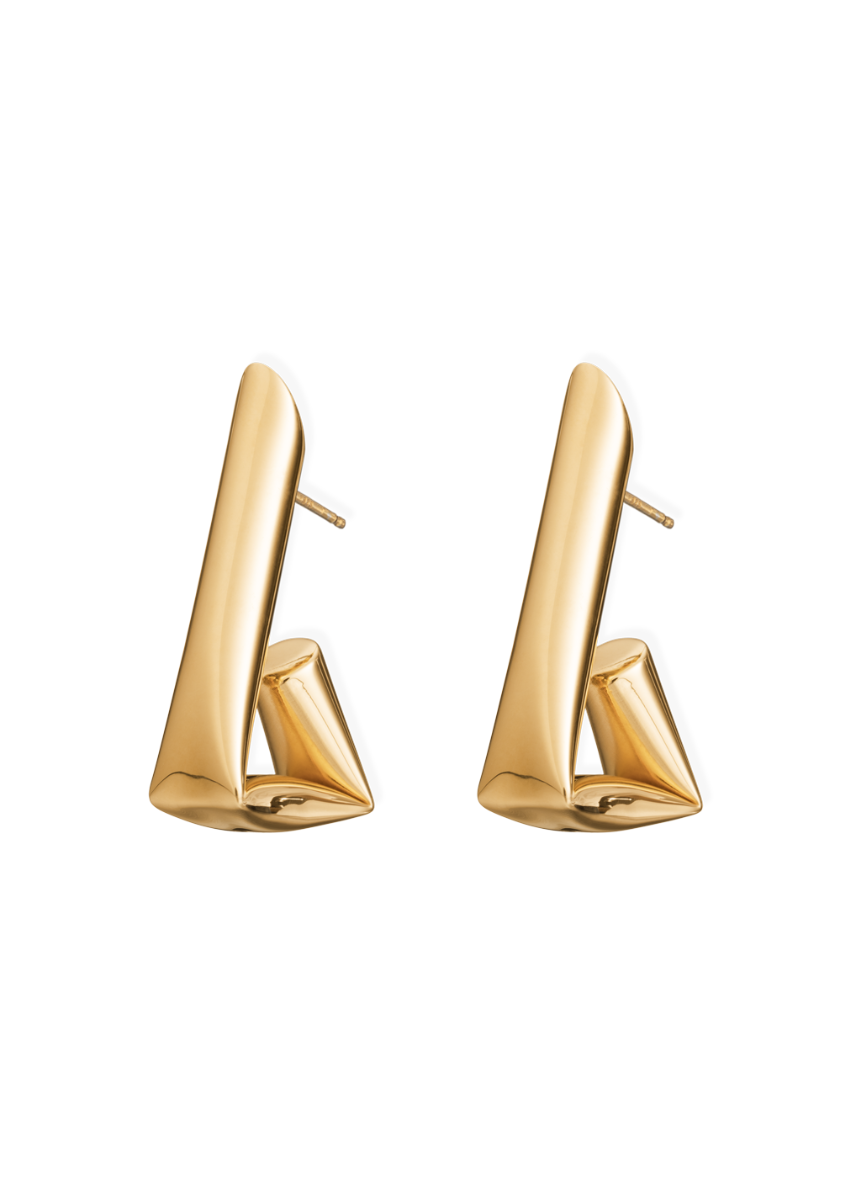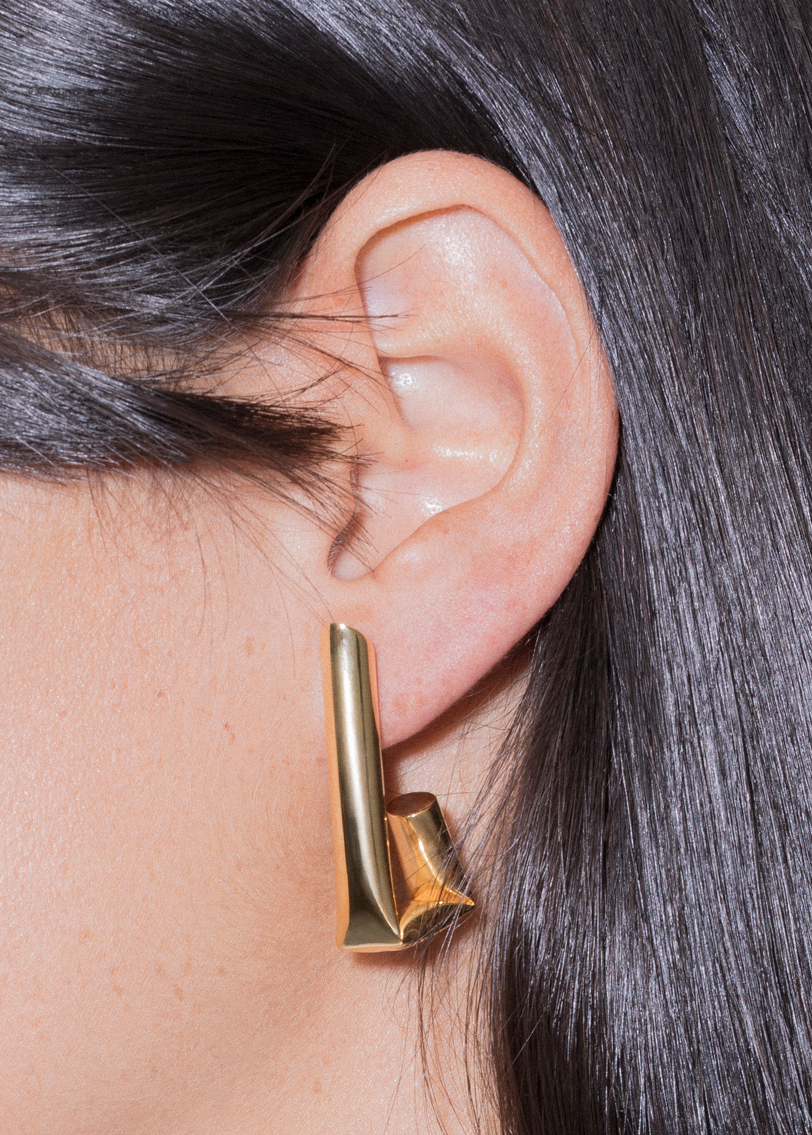hoop earrings are a timeless accessory, their circular shape is associated with unity, infinity, and wholeness. they are seen as a bold statement of style, confidence and cultural pride across different ethnicities. from minimalist gold hoops to oversized, embellished versions, they are versatile and reflect individuality as well as collective heritage.
they are one of the oldest forms of jewelry, with a rich history spanning thousands of years and numerous cultures, and have evolved from a symbol of status and identity to a modern fashion staple. hoop earrings can be traced back to ancient civilizations, particularly in mesopotamia, egypt, and africa, where they were worn by both men and women as early as 2500 BCE.
 sumerian hoop earring (2600–2500 B.C)
sumerian hoop earring (2600–2500 B.C)

electrum earring with double-axe decoration, second half of the 7th or beginning of the 6th century BC, lydian

stone relief from 1348 BCE depicts two male nubian warriors wearing earrings.
in ancient egypt, hoop earrings were worn by both men and women, and they symbolized wealth and status. pharaohs and queens, such as cleopatra, were known for their lavish gold hoop earrings, which often represented the wearer's power and divine connection. and in mesopotamia, archaeological discoveries suggest that hoop earrings were popular in sumerian culture, where they were made of gold, silver, and other metals.

egyptian gold hoop earring, c.1648-1540 B.C

byzantine gold half moon-shaped earring with peacocks, late 6th–7th century

byzantine pearl, garnet and emerald earrings. circa 5th-6th A.D.

stone relief depicts two male nubian warriors wearing earrings (1348 BCE)
throughout the classical periods of greece and rome, hoops were a popular fashion accessory for women. while the greeks favored more ornate designs, the romans were known to create hoops from gemstones and precious metals, symbolizing femininity and elegance.

“saffron gatherer” detail from a minoan fresco in akrotiri, santorini (1600 BC)
 hoop of twisted wire ending in a lion's head, greece (4th‒3rd century BC)
hoop of twisted wire ending in a lion's head, greece (4th‒3rd century BC)

cypriot gold crescent-shaped earring, 5th century BCE–1st century CE
for the aztecs and mayans, hoop earrings were also worn by both men and women in the ancient mesoamerican cultures. they symbolized beauty, status, and power, and were made of gold and jade to create elaborate earrings.
among native american tribes, hoop earrings often had spiritual and cultural significance, as their circular shape symbolized unity and eternity.
 the silversmith's daughter - navajo indian, near gallup, new mexico (1920)
the silversmith's daughter - navajo indian, near gallup, new mexico (1920)in the 1960s and 1970s, hoop earrings became an iconic part of the latin style, a symbol of heritage, confidence, and femininity. they also became a symbol of resistance and self-expression during the civil rights and black power movements.




hoop earrings, which have traveled across cultures and centuries, still stand as a fashion symbol for empowerment, heritage, and timeless beauty.
cláudia cavaleiro the editor in chief for CINCO editorial. born in '82 in coimbra, she is graduated in philosophy from the university of coimbra. passionate about books and podcasts in a geek kind of way, she always find something interesting to research. loves to bring awareness to social problems and loves working at CINCO!
we independently evaluate all recommended products and services. if you click on links we provide, we may receive compensation.

